Aerial Derby - 1920
-
-Aerial Derby - 1920
THE FIFTH
AERIAL DERBY
AIR RACE ROUND LONDON
FOR THE
ROYAL AERO CLUB TROPHY
and cash prizes, value £1,000

Saturday 24th July 1920. Start and Finish: Hendon
Instructions:
1 Hendon Start and Finish - (pass over on first circuit).
The finishing line is in front of the Aerodrome Enclosures
2 Brooklands Turning Point is a large white cross in the centre of the Aerodrome and Motor Racing track 3 Epsom Turning Point is the Race Course Grand Stand which is at the top of Epsom Downs, making a conspicuous land-mark. 4 West Thurrock Turning Point is at the Wouldham Cement Works, on north bank of the River near top of the bend a mile east of Purfleet and slightly to the east of West Thurrock Church. The actual point consists of a long rectangular buff-coloured building with a large diagonal white cross on the roof. Five factory chimneys stand in line at equal distances behind the building flanked by two taller chimneys and a high one further to the right. 5 Epping Turning Point is Epping Church Tower in centre of Epping Village on the West side of London Road, 200 yards south of Church is a solitary water tower 120 feet high. 6 Hertford Turning Point is a large white cross in Hartham Meadow immediately north of the town adjoining the railway stations and enclosed on the north, east and west by streams. 2 laps - 200 miles. Start: 3pm

Jimmy James' Nieuhawk - you'll have to imagine the blue and yellow chequers Story of the Race:
"Undoubtedly a tremendous success...an excellent demonstration of the safety, speed and certainty of air travel"
Pilot Aircraft (click here for more details) Race No Result 
Mr Bert Hinkler Avro 534 Baby G-EACQ 1 2nd 
Capt H A Hamersley Avro 534 Baby G-EAUG 2 1st .jpg)
Mr Frederick S Cotton Airco DH.14a G-EAPY 4 Retired - forced landing near Hertford (petrol leak, causing a fire - passenger Mr Harwood injured, a/c damaged)
.jpg)
Capt William L Jordan Sopwith 7F1 Snipe G-EAUW 5 5th 
Flt-Lt Walter H Longton Sopwith 7F1Snipe G-EAUV 6 Reired - 2nd lap 
Flt-Lt John S T Fall Sopwith 7F1 Snipe G-EAUU 7 Retired - forced landing at Epping on the first lap 
Capt D G Westgarth-Heslam Avro 539 G-EALG 8 Retired - forced landing (fuel problem) near Abridge. 
Mr Jimmy James Nieuport Nieuhawk LC.1 G-EAJY 10 3rd 
Mr R H Nisbet Martinsyde F.6 G-EAPI 11 6th 
Sqn Ldr Thomas O'B Hubbard Martinsyde F.4a G-EAPP 12 8th .jpg)
Mr Harry G Hawker Sopwith Schneider Cup 'Rainbow' G-EAKI 13 Disqualified - did not cross finish line (would have been 3rd) 
Mr Cyril F Uwins Bristol Type 32B Bullet G-EATS 14 7th 
Mr Frank T Courtney * Martinsyde 'Semi-Quaver' G-EAPX 15 4th. 1st in Speed Section (but then made a bad landing and overturned, fortunately without serious injury) .jpg)
Major Leslie R Tait-Cox Nieuport Goshawk G-EASK ** 16 Retired - forced landing at Brooklands on first lap * replacing Fred Raynham, who had hurt his arm
** Tait-Cox held the British air speed record in this aeroplane - 166.5mph on 17 June 1920.
Starters: 14 Finishers: 8 (or 9 if you count Harry Hawker)
Did not start:
Pilot Aircraft Race No Mr Leth Jensen Spad 29 3 -
-The Aviators
The Aviators
-
Cotton, Frederick Sidney
Flt-Lt Frederick Sidney Cotton OBE
 in 1920
in 1920
in 1916, when a Flt Sub-Lt in the RNAS
b. 17 June 1894 in Bowen, Queensland, Australia
RNAS in WWI; he invented the 'Sidcot' flying suit, which was standard issue in the RAF until the 1950s.
There was a curious period in early 1920 when four sets of people tried to fly from Cairo to Cape Town; not for any particular prize or competition, but just because they fancied being the first to do it. Frederick Cotton and his engineer Capt W A Townsend flew a DH.14a and were the least successful of the lot, making a forced landing in southern Italy and writing off the machine before they even got to Cairo.
In the winter of 1920-21 he and Alan Butler were in Newfoundland, "doing some extremely useful work surveying, spotting for seals, etc", and the following September they both competed in the Croydon Aviation Meeting.
In late 1922 he had "exciting times" in flying from Newfoundland to the newly-discovered gold fields at Labrador. He then settled into being a pilot in Newfoundland, although he came back to England occasionally, for example for the 'Portsmouth Trophy Race' round the Isle of Wight in 1934, in which he came second.
Married 3 times, clever, sometimes quite rich (although he died penniless) and rather, er, "unorthodox" (bleedin' awkward, by the sounds of it), he spent WWII as an unofficial advisor to the Admiralty, especially involved with photographic reconnaisance and airborne searchlights.
d. 13 Feb 1969 in London
-
Courtney, Frank Thomas
Capt Frank Thomas Courtney
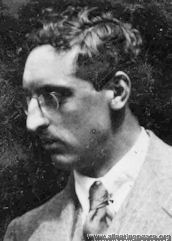
 photo: 1972, holding the King's Cup at the RAF Museum, Hendon, aged 78
photo: 1972, holding the King's Cup at the RAF Museum, Hendon, aged 78An Irishman and early aviator; he test-flew the prototype D.H.18 - de Havilland's first purpose-designed airliner - in March 1920 and often flew it in service. Also flew in the 1929 Cleveland National Air Races. Also flew the Cierva autogyro in 1925, (but not in the King's Cup)
-
Fall, Joseph Stewart Temple
Flt-Lt Joseph (aka John) Stewart Temple Fall DFC AFC 
in 1916 when a Flt Sub-Lt, RN

photo: 1920
b. 17 Nov 1895 in Cowichan, Vancouver B.C. Canada
WWI ace with the RNAS (36 victories, making him the 7th-highest scoring Canadian); he stayed in the RAF from its inception in 1918 until he retired in 1945 as a Group Captain.
d. 1988.
-
Hamersley, Harold Alan
Capt Harold Alan Hamersley MC  1920
1920b 6 Feb 1896 in Guildford, W Australia.
Studied mechanical engineering before WWI, commonwealth commission then transferred to the RFC in June 1916. Served with 60 Sqn in France, where he was awarded the MC for gallantry in leading patrols. Ended the war with 11 victories, despite his SE.5 being damaged and forced down by German ace Werner Voss in September 1917.
Awarded a permanent RAF commission in 1926, then promoted to Wing Commander in 1938 as Chief Instructor to the London University Air Squadron.
d. 1967
-
Hawker, Harry George
Mr Harry George Hawker MBE, AFC 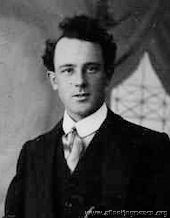
in 1912, aged 23
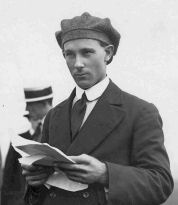
b. 22 Jan 1889 in Victoria, Australia; son of a blacksmith, and the co-founder of Hawker Aircraft.
A very early flier - RAeC Certificate No 297, in 1912. The following year, he made 5 flights 'on and off water' in a Sopwith-designed seaplane, which meant that they won the £500 offered by the RAeC.
An even bigger prize in 1913 was the £5,000 offered by the Daily Mail for a race for seaplanes, to cover nearly 1600 miles in 72 hours round the coast of Britain. Harry (with fellow Australian H Kauper as mechanic) started off in a Sopwith from Southampton on August 16th. They got as far as Yarmouth but Harry felt unwell (later they worked out that he had sunstroke) and had to return to Southampton for another try, which started on the 26th.
Unfortunately, having made good progress on their first day, nearing Dublin on the second his foot slipped off the rudder bar, the aeroplane fell "like a stone" and dumped them in the Irish Sea, whence they had to be rescued by the Coastguard; the machine was wrecked. Harry was unhurt, Mr Kauper injured. The Daily Mail gave them a consolation prize of £1,000 "in recognition of their plucky attempt".
A few weeks later, he wrote off another Sopwith at Brooklands, badly injuring his back. The following year he did it again in almost the same place, this time failing to control a loop and spinning down into some trees. When spectators reached the scene, Harry was standing by the smashed aeroplane, "bewildered but unhurt".
Nothing daunted, he broke the British altitude record by climbing to 18,393ft in 1915, although it took him over an hour and he" suffered greatly from the cold"; he then broke the world record by getting to 24,408ft on 26 April 1916 (which started people wondering about perhaps flying to the top of Everest).
Next, in 1919, the Daily Mail offered £10,000 for a flight across the Atlantic. Harry, with Commander Kenneth Mackenzie Grieve R.N. as navigator, started from Newfoundland on 18th May but the aeroplane had problems with its radiator and they had to put down in the sea after about 800 miles. It was several days before the news emerged that they had been rescued by the small steamer 'Mary', and taken to Thurso. The Nation, having feared the worst, was mightily relieved, and gave them a terrific welcome; "No event since the Armistice has so stirred the popular imagination". Harry and Kenneth got the Air Froce Cross each (despite the fact that Harry wasn't actually in the Air Force), and £2,500 each as a not-inconsiderable consolation prize (although they had agreed to split the original prize 70:30). Before they could try again (on June 15th to be precise), Alcock and Brown had done it (just), been knighted by Mr Churchill and walked off with the cheque for £10k. Damn!
His luck finally ran out when he was killed in the Nieuport Goshawk G-EASK which crashed at Hendon 12 July 1921 while he was preparing for that year's Aerial Derby. The aeroplane burst into flames and spun in; Harry leapt from (or fell out of) the plane and was found some distance from its remains, "quite dead".
-
Heslam, Denis George Westgarth
Capt Denis George Westgarth Heslam  1920
1920b. 29 Jun 1885
Test Pilot for Avro.
d. Dec 1972 in Aldershot
-
Hinkler, Herbert John Louis
Sqn Ldr Herbert John Louis Hinkler 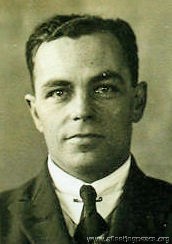
photo: 1927, aged 35
Australian 'Lone Eagle', aviation pioneer, killed in a crash in Italy in 1933
-
Hubbard, Thomas O'Brien
Sqn Ldr Thomas O'Brien Hubbard MC, AFC  1920, aged 38
1920, aged 38b. 14 Aug 1882 in London
A really early flier - RAeC Certificate No 222, in 1912; up to then he had been the Secretary of the Royal Aero Club, but transferred to the RFC as a Second Lieutenant (on probation) in July 1912.
In 1911 he had helped to translate Robert Petit's "How to build an aeroplane' from the French, including the prediction that aluminium "will soon be completely abandoned in aeroplane construction".
He wrote several other books, including "The Boys' book of Aeroplanes" (1913).
After WWI he continued in the RAF in Egypt, Palestine and, er, Bircham Newton in Norfolk. His final posting was as commander of the RAF station in Hinaidi, Iraq from 1929-31, and he then retired as a Wing Commander.
-
James, John Herbert
Lieut John Herbert 'Jimmie' James  1912, aged 18
1912, aged 18 1920
1920b. 2 June 1894 in Narberth, Pembrokeshire (which is in Wales); in 1913, he and his brother Henry were the first people in Pembrokeshire to build and fly their own aeroplane.
It was a sort-of-Caudron biplane and during its first flight it fell 60 feet to the ground, luckily without serious injury, and had to be rebuilt. It worked all right after that, though.
After WWI, he became test pilot to the British Nieuport Company; in April 1920 he flew the Nieuport in Bombay on a publicity trip, and its handling was "much admired". Nieuport later became Gloster Aircraft, and among his many accomplishments was the British Speed Record of 196.6 mph in a Gloster Bamel in 1921.
d. 4 Feb 1944, although he had "given up flying some time before".
-
Jordan, William Lancelot
Capt William Lancelot Jordan DSC DFC  1919
1919 1920, aged 24
1920, aged 24b. 3 Dec 1896 in Georgetown, South Africa
Appointed Temporary Captain for service with the forces in E Africa from 1st July 1916 (the day that the Battle of the Somme began) and then went on to join the RNAS and then the RAF. Flying the Sopwith Camel, he ended the War with 39 victories before being rested in 1918, and was transferred to the unemployed list in September 1919.
Got married in Kobe, Japan, in 1921 to Hazel Thorne - she was from London, so I've no idea why they were in Japan.
August 1925: "AIRMAN KILLED WHEN MOTOR CAR SKIDS. 'Death by misadventure' was the verdict at the inquest at Guildford on William Lancelot Jordan, of Greylake, Beaconsfield Road, Blackheath who died in Guildford Hospital from injuries received when thrown from his motor car on the Hog's Back, near Guildford, on Thursday night (20 Aug).
Jordan, who was in the Air Force during the war and brought down about seventy enemy aeroplanes, was driving with his wife from Bournemouth to Blackheath when his car skidded on the wet road, struck the bank, and turned over twice. It was stated at the inquest that Jordan had not been driving at excessive speed. His first question after the accident was 'Is my wife all right?' Mrs Jordan was seriously injured, but is recovering."
-
Longton, Walter Hunt
Flt-Lt (later Sqn-Ldr) Walter Hunt Longton 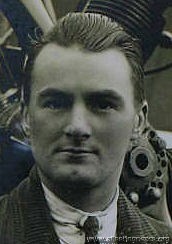 1916, aged 24
1916, aged 24'Scruffie' Longton, from Lancashire. 11 victories in WWI flying SE5s; DFC and bar.
Well known pre-war motor-cycling, and post-war aeroplane racer; whilst practising for the Bournemouth Air Meeting in April 1927, his aeroplane was hit by "one or two charges of shot from a sporting gun", possibly in protest at flying races on a Good Friday. A reward of £25 was offered for the detection of the culprit.
He was killed soon after - June 1927 - in a mid-air collision at the Bournemouth Whitsun Meeting, flying the prototype Bluebird.
"Every aircraft constructor knew that 'Longton's opinion' was worth having on anything new." C G Grey
-
Nisbet, Robert H
Lieut Robert H Nisbet  1920, aged 33
1920, aged 33b. 16 Oct 1887 in Fife, N.B.
Resigned his commission in Jan 1924, took out some patents when working for Sperry Instruments in 1939, and
d. before 1951
-
Tait-Cox, Leslie Robert
Maj Leslie Robert Tait-Cox  1916, aged 19
1916, aged 19 1920
1920b. 27 April 1897 in London
RFC and RAF in WWI, then an "exceptional" test pilot for Nieuport and General Aircraft Co Ltd, of Cricklewood.
Elected a Member of the RAeC in October 1921; at the time, the firm of 'Tait-Cox and James, Test Pilots' were extremely busy, and "could find work for half-a-dozen pilots", if they could find them.
In fact Leslie, followed by Jimmie, broke the British Speed record in 1921.
Joined Major Jack Savage's 'Sky-writers' in 1922 - as did Mogens L Bramson, Cyril Turner, G A Lingham, G F Bradley, D A Shepperson, C R McMullin, E D C Herne, Sydney St Barbe, Charles Collyer (US), Marttin Rudolph (Germany), and W von Feilitzsch (Germany).
Rejoined the RAF in 1926, and left in Jan 1935, to become a "Technical Mechanical Engineering Liason Officer"
Joined Plessey after WWII and d. Oct 1959 - Maidenhead, Berks.
-
Uwins, Cyril Frank
Mr Cyril Frank 'Papa' Uwins OBE 
1916, when a 2nd Lieutenant, London Regiment, aged 20
.jpg)
in 1954, elected vice-President of the Society of British Aircraft Manufacturers
The "rather withdrawn", chief test pilot for Bristol Aircraft, and their Assistant Managing Director after 1947; President of SBAC in 1956; died 1972
was, in fact, "very good at high-flying" and broke the world's height record by climbing to 43,976ft in 1932

